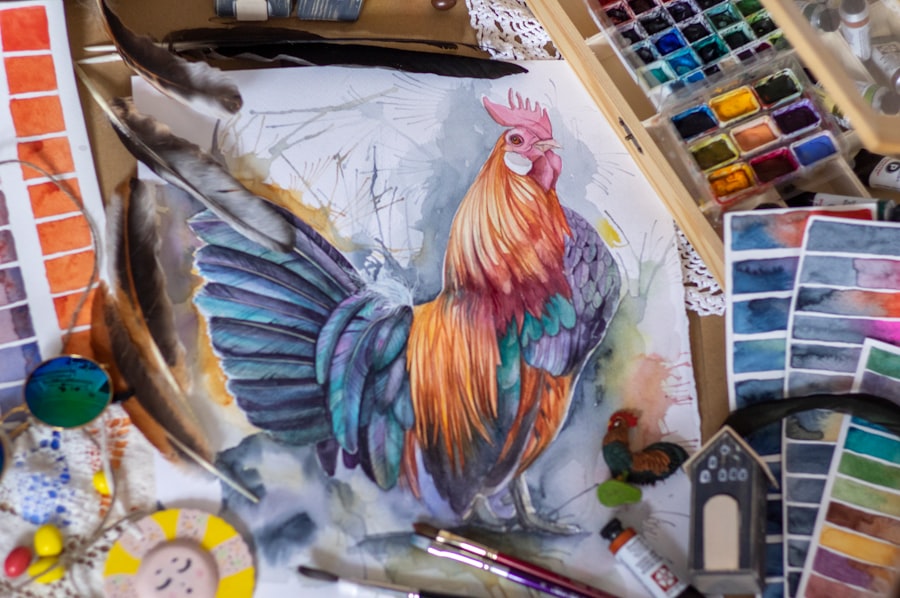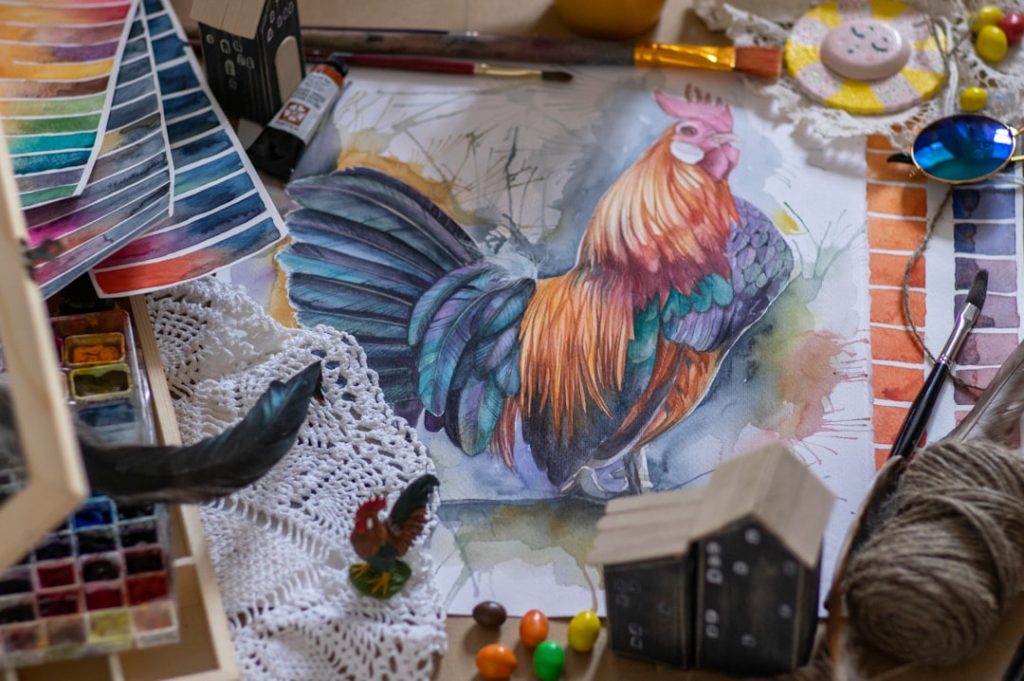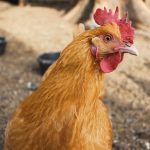Cross breeding chickens has been practiced for centuries, with origins tracing back to the early days of animal domestication. This process involves mating two distinct chicken breeds to produce offspring that inherit desirable traits from both parents. Historically, cross breeding has been utilized to enhance various aspects of chickens, including their health, productivity, and physical characteristics.
The 19th century saw a surge in the popularity of chicken cross breeding as farmers and breeders sought to develop more efficient egg-laying birds, improved meat producers, and chickens with increased disease resistance. This period marked the beginning of the development of hybrid chicken breeds, which are now widely used in commercial poultry production. Cross breeding has since become an integral part of the poultry industry.
Breeders continually work to create new and improved chicken breeds by selectively combining desirable traits from different lineages. This ongoing process has led to the development of numerous hybrid varieties that meet specific industry requirements and consumer preferences.
Table of Contents
Key Takeaways
- Cross breeding chickens has a long history dating back to ancient times, with the goal of creating more productive and resilient breeds.
- The benefits of cross breeding chickens include improved disease resistance, better egg production, and overall stronger and healthier birds.
- Common cross breeding methods include selective breeding, outcrossing, and inbreeding, each with its own advantages and challenges.
- Popular cross breeding chicken breeds include the Rhode Island Red, Cornish Cross, and the Sussex, known for their superior meat and egg production.
- Considerations for cross breeding chickens include careful selection of parent breeds, genetic diversity, and the specific goals of the breeding program.
- Challenges of cross breeding chickens include maintaining genetic diversity, avoiding inbreeding depression, and managing the potential for unexpected traits to emerge.
- The future of cross breeding chickens looks promising, with continued advancements in genetic research and technology leading to even more productive and resilient chicken breeds.
Benefits of Cross Breeding Chickens
Improved Traits and Productivity
One of the main advantages of cross breeding is the ability to create hybrid chickens that exhibit improved traits such as higher egg production, better meat quality, and increased disease resistance. By combining the genetic traits of different breeds, breeders can create chickens that are more efficient and productive, ultimately leading to higher yields and profits for farmers.
Enhanced Adaptability
Additionally, cross breeding allows for the development of chickens with enhanced adaptability to different environmental conditions. This is particularly important in regions with extreme climates or specific challenges, as it helps to ensure the survival and success of the chicken population.
Improved Health and Welfare
Furthermore, cross breeding can also lead to improved overall health and vigor in chickens, reducing the risk of genetic disorders and increasing the overall welfare of the birds.
Common Cross Breeding Methods

There are several common methods used in cross breeding chickens, each with its own advantages and considerations. One method is known as outcrossing, which involves mating individuals from different but related breeds to introduce new genetic material into a specific breed. This method is often used to improve specific traits within a breed while maintaining its overall characteristics.
Another method is known as crossbreeding, which involves mating two purebred chicken breeds to create hybrid offspring with a combination of traits from both parent breeds. This method is commonly used to create chickens with desirable traits such as high egg production, fast growth, or disease resistance. Additionally, backcrossing is a method used to reintroduce specific traits from one parent breed back into the hybrid offspring, resulting in chickens with a higher concentration of those desired traits.
Popular Cross Breeding Chicken Breeds
There are several popular cross breeding chicken breeds that are widely used in commercial poultry production. One example is the ISA Brown, a hybrid chicken breed known for its high egg production and excellent feed conversion ratio. This breed is a result of cross breeding between Rhode Island Red and Rhode Island White chickens, resulting in a bird that excels in both egg production and overall health.
Another popular cross breeding chicken breed is the Cornish Cross, which is a hybrid between Cornish and White Plymouth Rock chickens. This breed is highly valued for its fast growth rate and superior meat quality, making it a popular choice for meat production in the poultry industry. Additionally, the Red Sex Link is a hybrid chicken breed created by crossing Rhode Island Red roosters with White Leghorn hens, resulting in a bird that lays a high number of large brown eggs.
Considerations for Cross Breeding Chickens
When considering cross breeding chickens, there are several important factors that breeders and farmers must take into account. It is crucial to carefully select the parent breeds based on the desired traits and characteristics that are sought in the offspring. Additionally, proper management and care must be provided to ensure the health and well-being of the hybrid offspring, as they may exhibit different requirements compared to purebred chickens.
Furthermore, it is important to consider the potential challenges and limitations associated with cross breeding, such as genetic diversity and maintaining desired traits over successive generations. Breeders must also be mindful of potential negative effects such as reduced fertility or increased susceptibility to certain diseases that may arise from cross breeding. Overall, careful planning and consideration of these factors are essential for successful cross breeding programs.
Challenges of Cross Breeding Chickens

Genetic Diversity and Resilience
One of the main challenges is maintaining genetic diversity within chicken populations. Repeated cross breeding can lead to a reduction in genetic variation over time, resulting in decreased resilience to diseases and environmental stressors. This can ultimately impact the overall health and productivity of the chicken population.
Unintended Consequences
Another challenge is the potential for unintended consequences from cross breeding, such as the expression of undesirable traits or genetic disorders in the hybrid offspring. Managing and maintaining the desired traits over successive generations can be challenging, requiring careful selection and breeding practices to ensure the preservation of those traits.
Record-Keeping and Pedigree Documentation
Furthermore, ensuring proper record-keeping and pedigree documentation is essential for tracking and managing the genetic diversity within cross bred chicken populations. This helps breeders to make informed decisions and avoid potential pitfalls.
Future of Cross Breeding Chickens
The future of cross breeding chickens looks promising as advancements in genetics and breeding techniques continue to evolve. With ongoing research and development, breeders have the opportunity to create new and improved hybrid chicken breeds with enhanced traits such as disease resistance, environmental adaptability, and overall productivity. Additionally, advancements in technology and genetic testing offer new tools for breeders to more accurately select and manage desirable traits within cross bred chicken populations.
Furthermore, there is growing interest in sustainable and organic poultry production, which may drive further innovation in cross breeding practices to create chickens that thrive in alternative farming systems. As consumer demand for high-quality poultry products continues to grow, there is an opportunity for breeders to develop new hybrid chicken breeds that meet these evolving market demands. Overall, the future of cross breeding chickens holds great potential for creating healthier, more productive, and resilient chicken populations that can meet the needs of a changing poultry industry.
If you’re interested in learning more about cross breeding chickens, you may also want to check out this article on do quails sit on their eggs. It provides valuable information on the breeding habits of quails, which can be helpful in understanding the process of cross breeding different poultry species.
FAQs
What is cross breeding in chickens?
Cross breeding in chickens is the process of mating two different breeds of chickens to produce offspring with desirable traits from both parent breeds. This is done to improve certain characteristics such as egg production, meat quality, or disease resistance.
What are the benefits of cross breeding chickens?
Cross breeding chickens can result in offspring that exhibit hybrid vigor, which can lead to improved growth rates, better disease resistance, and overall better performance. It also allows breeders to combine the best traits of different breeds to create chickens that are well-suited for specific purposes, such as egg laying or meat production.
What are some common crossbred chicken varieties?
Some common crossbred chicken varieties include the Black Sex Link, Red Sex Link, and the Cornish Cross. These varieties are often bred for specific purposes, such as high egg production or fast growth for meat production.
How is cross breeding different from inbreeding?
Cross breeding involves mating chickens from different breeds, while inbreeding involves mating closely related individuals within the same breed. Cross breeding is done to introduce genetic diversity and improve certain traits, while inbreeding can lead to an increase in genetic defects and health problems.
Are there any challenges associated with cross breeding chickens?
One challenge of cross breeding chickens is that the offspring may not always exhibit the desired traits, and it can take several generations of selective breeding to achieve the desired results. Additionally, maintaining the purity of specific crossbred varieties can be challenging if not carefully managed.
Meet Walter, the feathered-friend fanatic of Florida! Nestled in the sunshine state, Walter struts through life with his feathered companions, clucking his way to happiness. With a coop that’s fancier than a five-star hotel, he’s the Don Juan of the chicken world. When he’s not teaching his hens to do the cha-cha, you’ll find him in a heated debate with his prized rooster, Sir Clucks-a-Lot. Walter’s poultry passion is no yolk; he’s the sunny-side-up guy you never knew you needed in your flock of friends!







